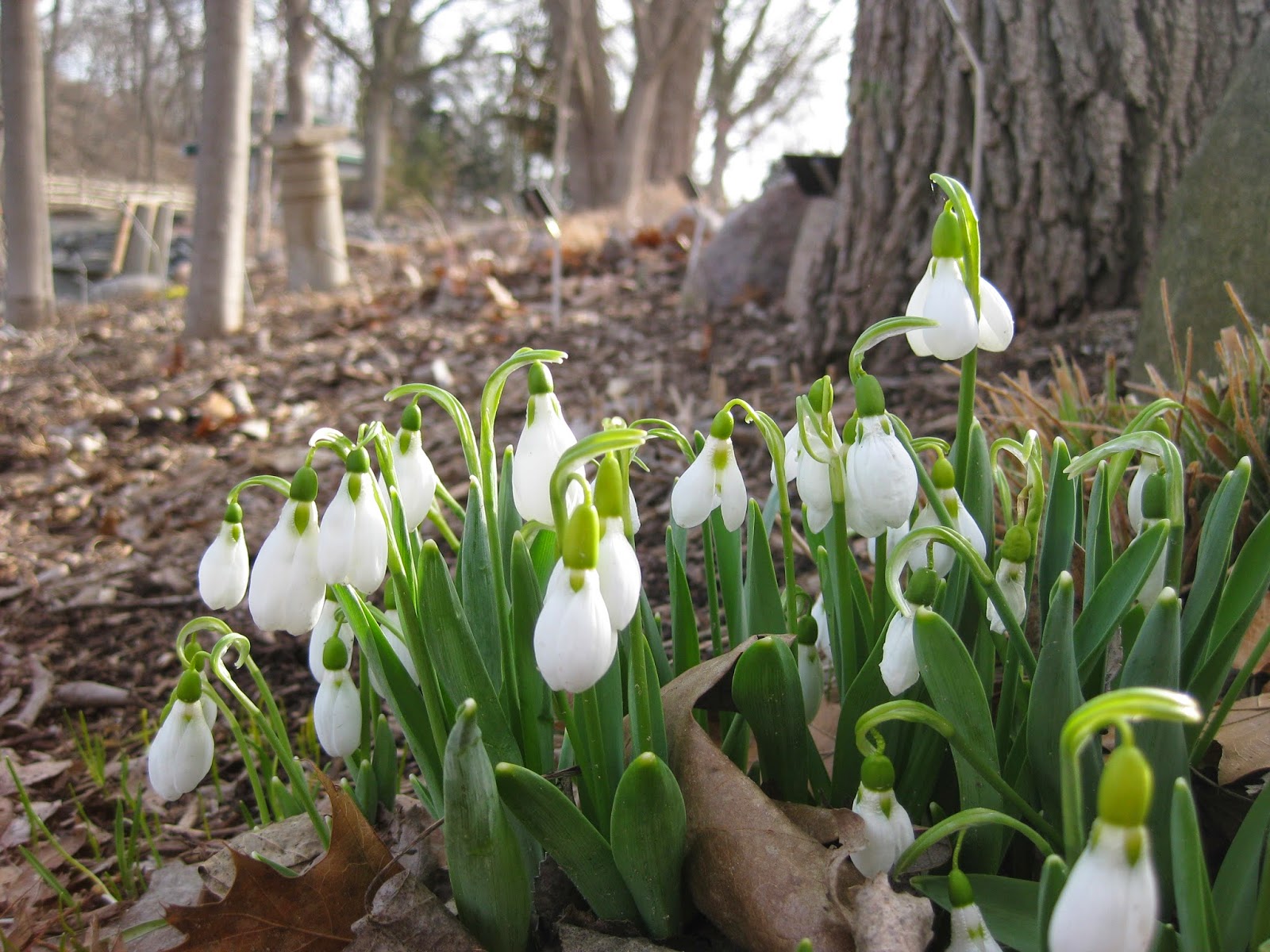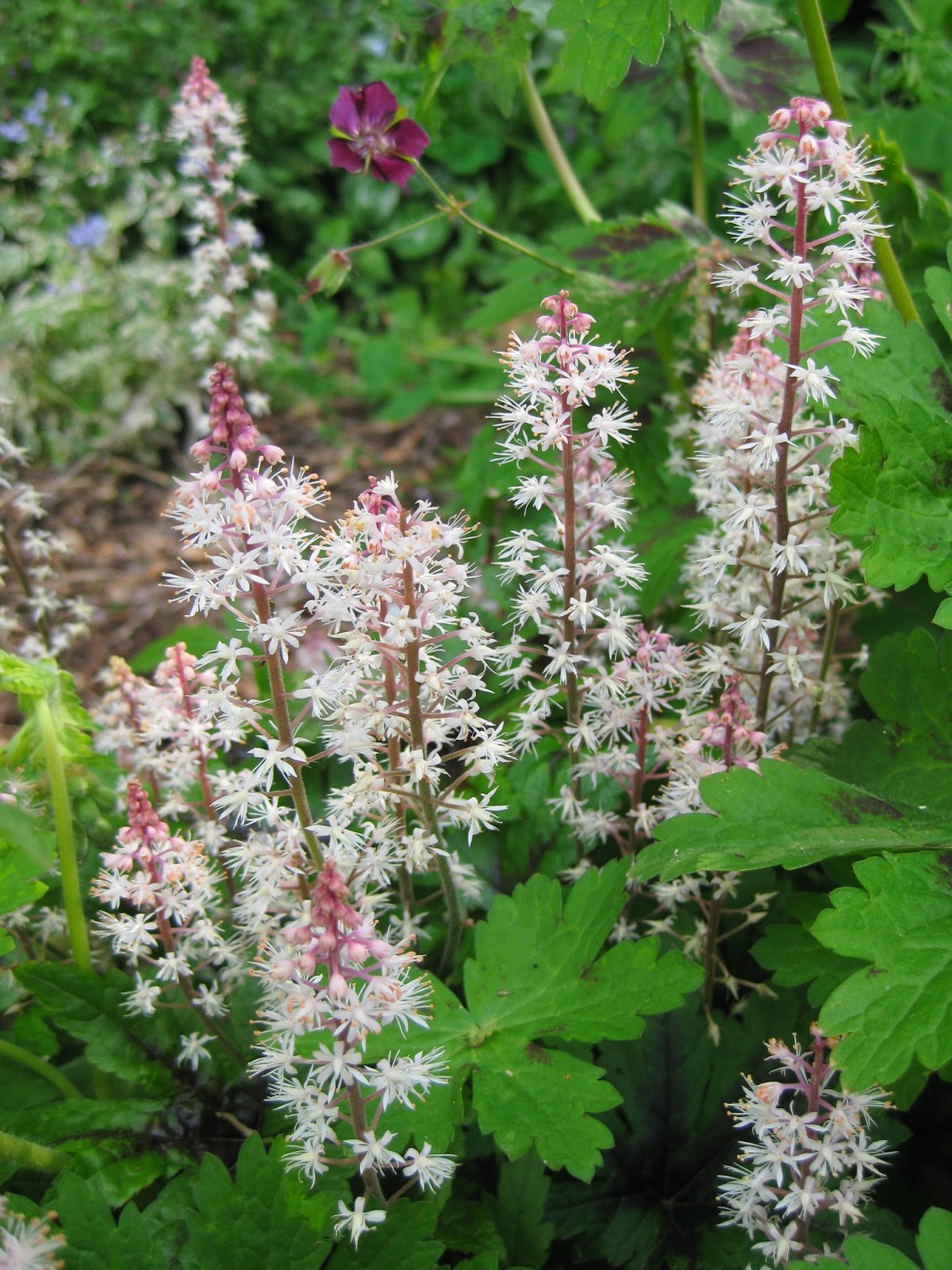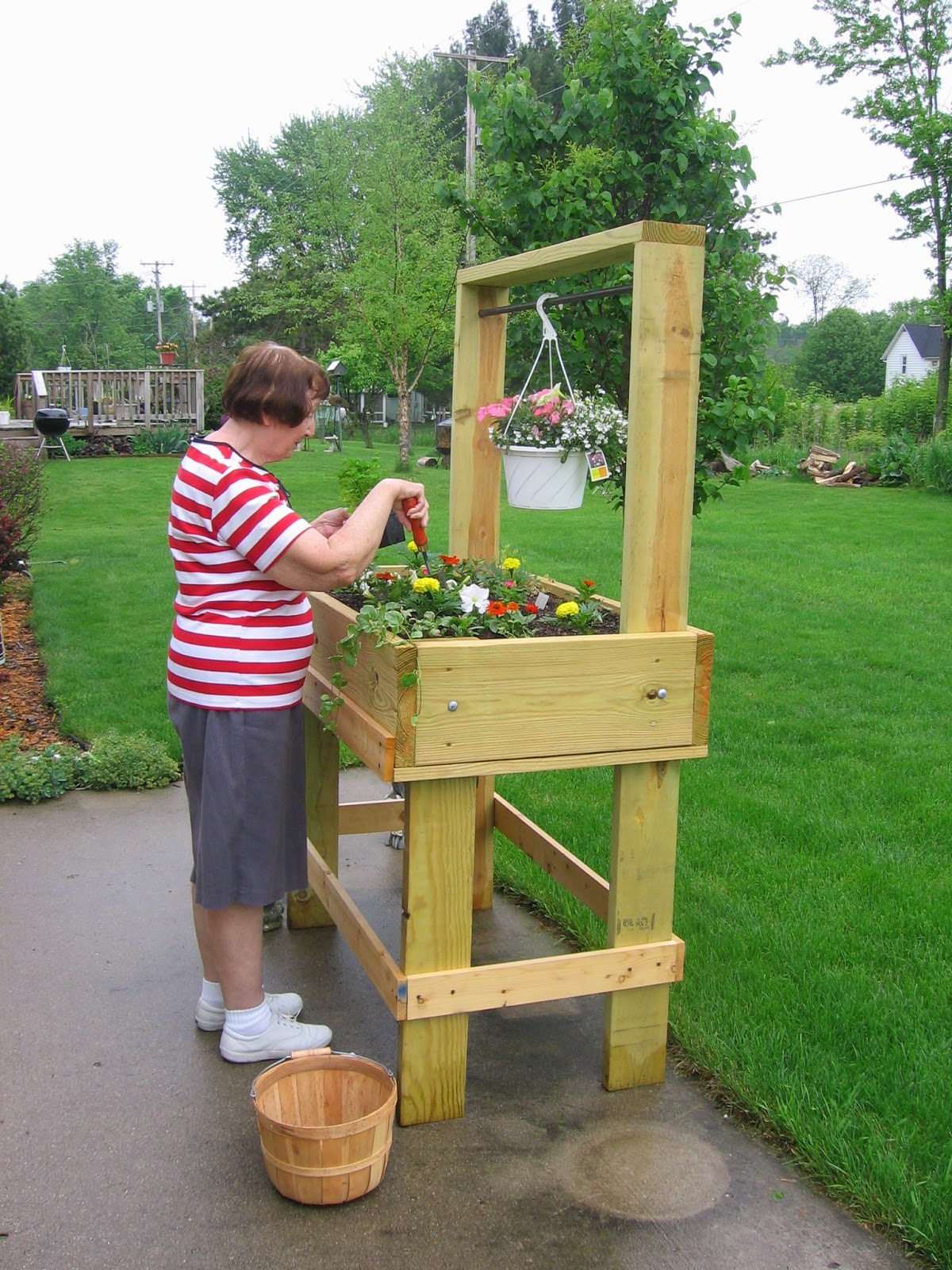We had quite a crew of volunteers this morning as evidenced by the cars seen above near the Horticulture Center. We all had to park in the adjacent field to allow space for a semi-truck/trailer to pull in and unload some shredded bark (see further below). Below is my first Grumpy List for the year and we had plenty of guys (and gals) come in to help out. Today was also the first day of the official return for some of our grounds crew. Big John, Terry and Pat all started today although I've seen them over the winter months as well. All three guys focused on collecting, hauling and processing Holiday Lights Show (HLS) displays. Cheryl, Jenny, Cindy and Janice are all starting soon as well. It was a great day to be outside with no shortage of work to accomplish with garden clean-up efforts and continued take down of the HLS. Larry helped with all sorts of duties today and met with a new contractor that will be maintaining our water features this year.
All of our carts (and volunteers) went in to immediate action as seen below. Bob, Gene, Ron W., Lloyd and Rollie all jumped in to cutting back ornamental grasses as seen below. The third photo down shows Gene (left) and Bob (goofy backwards hat). The guys targeted some specific areas and did a nice job tidying up. We had two new Grumpies come in today. The second photo down shows Emmitt (far left) and Ron (far right) who both had the pleasure of working with our veteran Grumpy, Larry H. (centered). The guys did a great job sweeping up some of the paths that still had lots of sand and debris left from the HLS event. We look forward to our new Grumpies enjoying their experience at RBG and appreciate their valuable time. Maury was in to run errands and Gary continued progress on labels. Ron Y., Dave, Vern and Jim all worked on carpentry projects while Bob K. did some nice electrical improvements. Gary B. and Dr. Gredler both did significant painting this morning. Jenny and Dave spent a couple of hours cleaning up their assigned gardens (formal gardens and hosta hollow) and did a thorough job as usual. Stan came in this afternoon for Japanese garden tidying and pruning and Bill O. continued processing HLS cords for storage this afternoon. The fourth photo down shows Kay (right) and Bev who did a nice job processing labels for our plant sale vegetables. Gary S. helped them as well. We also saw Shawn, Dave G., Bev W. and many others today. See further down for some other "pictures o' the day."
snowdrops (Galanthus sp.) are really starting to bloom now
winter aconites (Eranthis hyemalis) continue to peek up in the gazebo garden and elsewhere
our colorful containers (upside down here!) await installation in the coming weeks
our first of two large loads of shredded bark arrived this morning
Winter damage on conifers is very significant this year as a result of a brutal winter. I've been asked many times about what to do about it. I recommend not doing anything until we get in to mid-May. This "browning", while stressful to the plant, may not mean that the branches and buds are dead. Wait and see if any new growth flushes out to replace the dessicated needles and branchlets. All hope is not lost but we will inevitably see some conifer losses this spring. Above is our 'Skylands' Oriental spruce (Picea orientalis) showing the normal golden growth that was under the protective snow. The rest of the plant isn't looking real good but I'm going to wait on this one too!





















.jpg)





















.jpg)




.jpg)
.jpg)
.jpg)
.jpg)
+2011.jpg)







